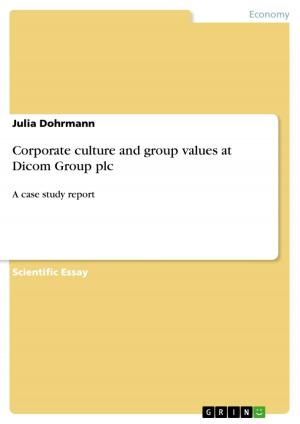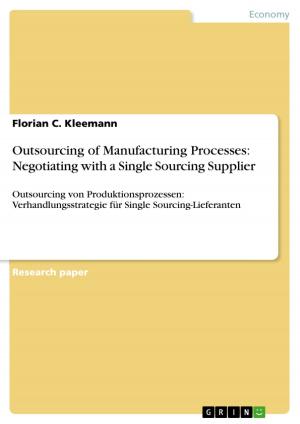Risk-Adjusted Return on Capital as a Concept in Value-Based Logistics Management
Business & Finance, Management & Leadership, Production & Operations Management| Author: | Angelina Freshta Farzam | ISBN: | 9783640441488 |
| Publisher: | GRIN Publishing | Publication: | October 8, 2009 |
| Imprint: | GRIN Publishing | Language: | English |
| Author: | Angelina Freshta Farzam |
| ISBN: | 9783640441488 |
| Publisher: | GRIN Publishing |
| Publication: | October 8, 2009 |
| Imprint: | GRIN Publishing |
| Language: | English |
Seminar paper from the year 2007 in the subject Business economics - Supply, Production, Logistics, grade: 1.7, Protestant University of Applied Sciences Hamburg (Protestant University of Applied Sciences Hamburg), course: International Logistics Management, language: English, abstract: Continued deflationary trends in many markets around the world are creating greater pressure for risk prevention in order that margins can be maintained. Customers and consumers are increasingly value driven. In this challenging world, there is a growing recognition that creative pricing strategies combined with effective supply chain management provide opportunities for significant risk capital cost reduction and yet increased profits. This paper presents evidence and a new model to support this viewpoint and suggests an approach to supply chain alignment that can enable cost reduction opportunities to be identified and higher profits to be achieved through collaborative strategies. For a good risk management the bank uses, among other figures, RORAC, RAROC and RARORAC to minimize the risk that each credit-borrower brings along. In the financing sector, therefore, they created the credit-ranking system. Now the next question would be, why not implement that credit-ranking in logistics to minimize risks in order to create a certain risk capital as security. Especially in the airfreight segment, where there is a lot of environmental risk involved, there has to be created a new way to prevent from high unexpected losses. The question that has to be answered
Seminar paper from the year 2007 in the subject Business economics - Supply, Production, Logistics, grade: 1.7, Protestant University of Applied Sciences Hamburg (Protestant University of Applied Sciences Hamburg), course: International Logistics Management, language: English, abstract: Continued deflationary trends in many markets around the world are creating greater pressure for risk prevention in order that margins can be maintained. Customers and consumers are increasingly value driven. In this challenging world, there is a growing recognition that creative pricing strategies combined with effective supply chain management provide opportunities for significant risk capital cost reduction and yet increased profits. This paper presents evidence and a new model to support this viewpoint and suggests an approach to supply chain alignment that can enable cost reduction opportunities to be identified and higher profits to be achieved through collaborative strategies. For a good risk management the bank uses, among other figures, RORAC, RAROC and RARORAC to minimize the risk that each credit-borrower brings along. In the financing sector, therefore, they created the credit-ranking system. Now the next question would be, why not implement that credit-ranking in logistics to minimize risks in order to create a certain risk capital as security. Especially in the airfreight segment, where there is a lot of environmental risk involved, there has to be created a new way to prevent from high unexpected losses. The question that has to be answered















